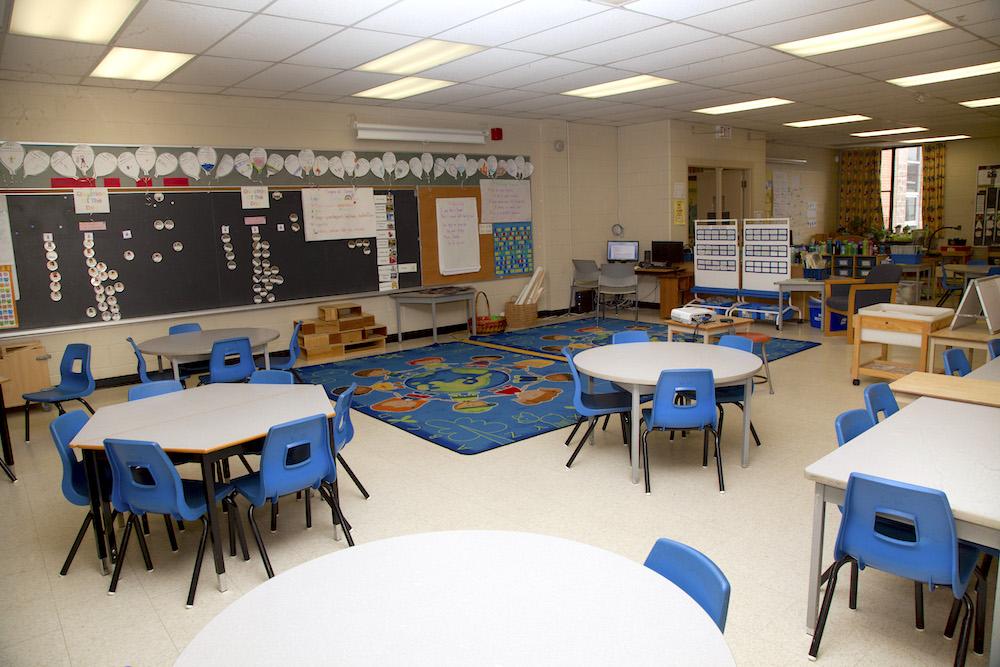
Violence in the Early Years
In many of our Kindergarten to Grade 3 classrooms violent behaviour is becoming more common. There are a significant number of violent incidents occurring in the classrooms of our youngest elementary school students, with children as young as 3 or 4 causing physical injury to both other students and staff. These violent behaviours, and the disruptions and evacuations that result, impact the learning environment and the physical and mental health of both students and staff. For young students witnessing violence in the classroom there may be long term effects such as anxiety or fear of returning to school. For staff, the lack of supports for dealing with violent incidents may cause stress, anxiety or physical injury. The young students who have these outbursts are also affected, they may feel badly about not being able to control their behaviour and may also have feelings of anxiety.
Funding for Classroom Supports and Early Intervention
In many of our schools, the demand for support for students with high risk behaviours outweighs access to front-line support staff. The primary obstacles to obtaining sufficient and timely support for high risk students are underfunding and a lack of resources. Other factors that contribute to this problem include long wait lists for in-school assessments and long wait times for children’s mental health services. All of this has an impact on how well educators are able to meet the needs of their students.
A number of studies have shown that young children who demonstrate high levels of aggression have a strong likelihood of continuing this type of behaviour if they do not get the support they need. This makes early intervention that much more crucial as this behaviour may continue with students as they progress through school. It is essential that students receive appropriate support when they are young in order to reduce or eliminate high risk behaviours. Timely access to in-school and external assessments and services and intervention programs are critical. Some communities have pre-school Early Intervention Services, which can assist schools in preparing for the specific needs of incoming students who may have been identified as having high risk behaviours. Unfortunately, not all children with high risk behaviours will have access to or seek access to these services. Without advance knowledge, schools already facing limited resources are not well enough prepared to deal with these students when they arrive.
Reporting and Having a Plan
The shortfall in resources to help deal with student violence creates health and safety concerns for everyone involved and these concerns have legal and policy implications. Superintendents, administrators and staff must have a clear understanding of their legal responsibilities, which cannot be limited by the age of the student. Under the Occupational Health and Safety Act, staff has a responsibility to report all violent incidents, which the principal must investigate and respond to. As soon as there is a known history of violence for a student, the principal must do an assessment of the risk of workplace violence and, in consultation with the appropriate staff, promptly develop a safety plan and/or a behaviour plan for example.
The principal must provide to staff as much information from the plan as is necessary to protect them from physical injury. The information in the plan must be shared with all staff who can be expected to encounter the student during the course of their work. It’s important that principals not wait for academic and psychological assessments or an identification to be completed in order to put a plan to protect staff and students in place. Furthermore, the perception that a student is too young to be harmful to others, too young to understand what they are doing or has not yet settled into JK does not constitute an exception to the legal responsibilities of all staff regarding the reporting of violent incidents and the legal responsibilities of the principal to ensure a plan and supports are in place.
Under the Education Act, it is also the responsibility of all staff to report (using the Safe Schools Incident Reporting Form – Part I), any serious student incident directed towards staff or students that may lead to suspension or expulsion. The age of the student does not mitigate the reporting, but it is taken into account by the principal when considering consequences for the behavior.
Advocating for Early Years Educators
As part of the ETFO Call to Action, we are ensuring our early years members understand that they have a right be informed about a student with a history of violence and the contents of that student’s plan, including the roles of staff. ETFO members are also being called on to become informed of their responsibilities to report all violent incidents.
How is ETFO advocating for our members? Further to the Call to Action, ETFO has established a multi-year strategy to address workplace violence. This strategy involves making recommendations to the government for stronger funding and resources for special education; working with community groups and providers of children’s mental health services to press the government for a more comprehensive approach to supporting students with high risk behaviours; working with the Ministries of Education and Labour to improve school board compliance with health and safety legislation and policies; and working with Ministry of Education and school board representatives to improve workplace violence reporting and to develop better health and safety training around workplace violence for superintendents, principals and staff.
If you need support or advice about workplace violence related to students in the early years, you can contact your local office or call Professional Relations Services (PRS) at the ETFO provincial office (1-888-838-3836 or 416-962-3836). The ETFO health and safety website has more information about workplace violence. Visit etfohealthandsafety.ca for more information.

